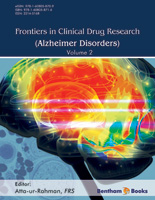
Photo from archive.org
Clinical classifications of neurodegenerative disorders are often based on neuropathology. The term "proteinopathies" includes disorders that have in common abnormal proteins as a hallmark, e.g. amyloidoses, tauopathies, synucleopathies, ubiquitinopathies. Different… Click to show full abstract
Clinical classifications of neurodegenerative disorders are often based on neuropathology. The term "proteinopathies" includes disorders that have in common abnormal proteins as a hallmark, e.g. amyloidoses, tauopathies, synucleopathies, ubiquitinopathies. Different proteins can also co-exist in the same disease. To further complicate the pathophysiology scenario, not only different proteins, but also cells are believed to play an active role in neurodegeneration, in particular those participating in neuroinflammatory processes in the brain, such as activated microglia and astrocytes. In clinical practice, differentiating pathophysiology from clinical symptoms to allow accurate clinical classification of these disorders during life, becomes difficult in absence of biomarkers for these pathology hallmarks. PET imaging can be a useful tool in this context. Using PET tracers targeting misfolded proteins it will be possible to identify the presence or absence of the target, to depict the cerebral distribution and to quantify the protein load in different cerebral regions, as well as to monitor changes over time. Beta-amyloid is one of the proteins involved in neurodegenerative disorders, which is currently suitable to be imaged by means of PET. Research efforts are currently ongoing in order to identify new PET tracers targeting non-amyloid PET tracers for neurodegeneration. This article will focus on the investigational PET tracers targeting tau and alpha-synuclein as misfolded proteins, and activated microglia and astrocytes as cellular targets for neuroinflammation. An overview of target characteristics, development challenges, clinical relevance and current status of human PET imaging is provided.
Journal Title: Current Alzheimer research
Year Published: 2017
Link to full text (if available)
Share on Social Media: Sign Up to like & get
recommendations!